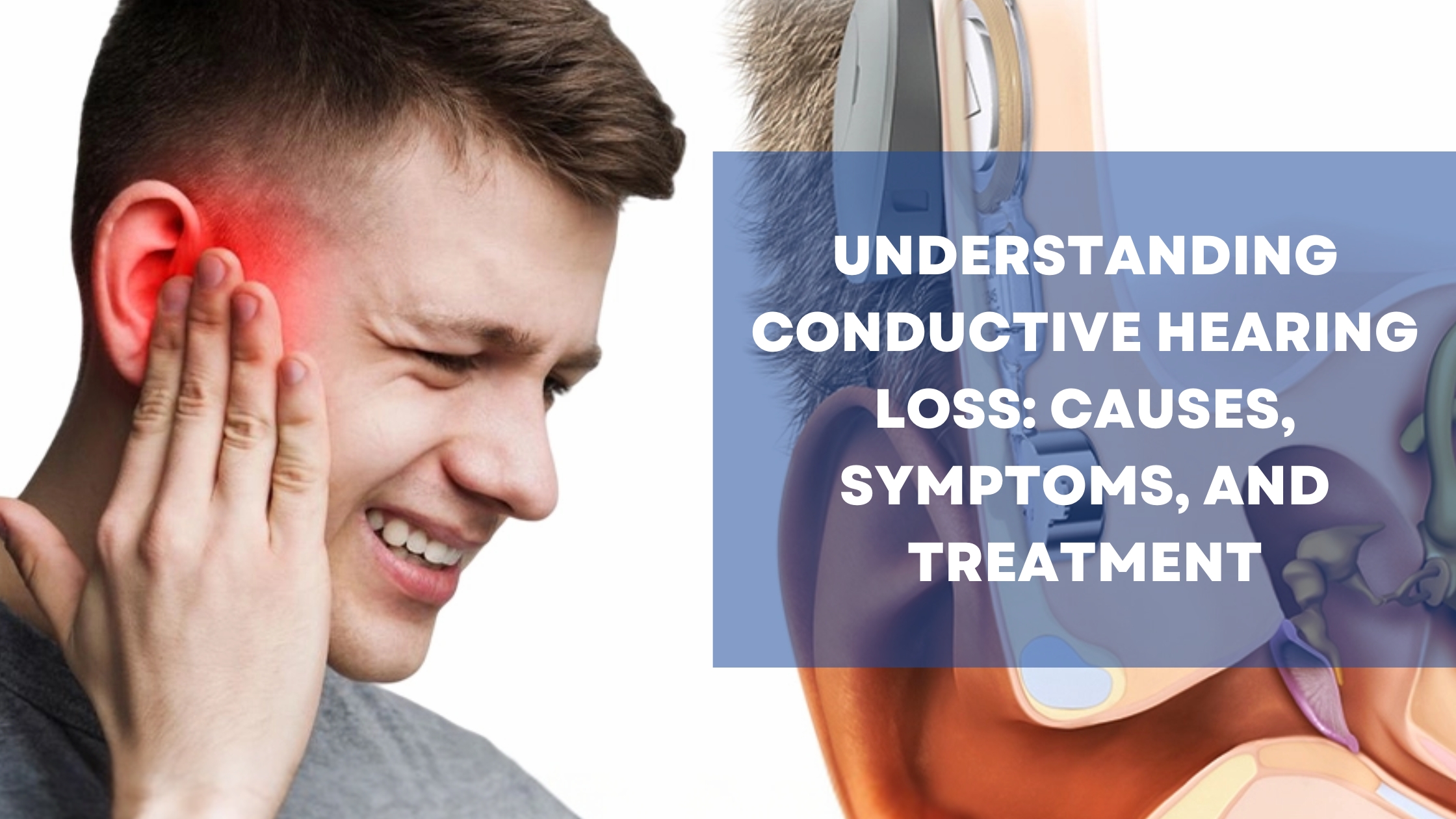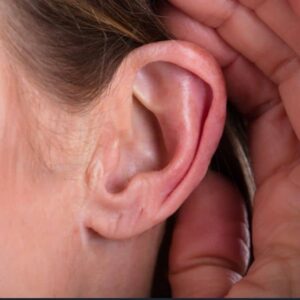

Introduction
All ages are affected by hearing loss, which can have several reasons. In particular, conductive hearing loss happens when there is a blockage to the sound waves traveling from the outside or middle ear to the inner ear. Ear infections, otosclerosis, and earwax accumulation are common causes of this kind of hearing loss. Common symptoms include ear pain, fullness in the ear, and muted hearing. Depending on the severity of the illness and its underlying cause, treatment options can include anything from medication and surgery to hearing aids. Acquiring knowledge of these factors can assist people in seeking the right treatment and care for their conductive hearing loss.

What is Conductive Hearing Loss?
When obstructions impede sound waves from efficiently traveling from the outside or middle ear to the inner ear, conductive hearing loss results. Problems with the eardrum, ear canal, outer ear, or middle ear structures such the ossicles are common causes. These problems impede regular sound transmission, which results in hearing impairments. Physical examinations and hearing tests are used to examine these structures in order to get a diagnosis. Depending on the underlying cause, there are many treatment options available, such as medication, surgery, or the use of hearing aids to enhance sound conduction and restore auditory function.
Causes of Conductive Hearing Loss
Numerous conditions affecting the middle or outer ear might result in conductive hearing loss. Ear infections are a common cause of obstructing sound waves due to inflammation and fluid buildup. Sound transmission can also be hampered by structural problems like a ruptured eardrum or anomalies in the ossicles, or middle ear bones. Furthermore, sound waves may not be able to reach the eardrum due to an extensive buildup of earwax in the ear canal. Diagnosing and treating conductive hearing loss effectively requires an understanding of these factors. In order to return hearing function to normal, treatment methods usually concentrate on treating the underlying problem.

Symptoms of Conductive Hearing Loss
One of the most common signs of conductive hearing loss is the inability to perceive quiet sounds at a sufficient volume. People may feel as though their affected ear is full or compressed. Ear infections and structural problems such as a perforated eardrum can also cause pain or discomfort in the ears. One ringing or buzzing sound in the ear that some persons with conductive hearing loss may experience is called tinnitus. The severity of the ailment and its underlying cause might affect the degree of these symptoms, underscoring the significance of prompt diagnosis and treatment.

Diagnosis and Treatment
An audiologist or otolaryngologist (ENT expert) must perform a thorough evaluation in order to diagnose conductive hearing loss. An otoscopic examination of the ears, audiometric testing, and occasionally imaging procedures such as CT or MRI to evaluate the ear anatomy are part of this.The precise etiology of the conductive hearing loss will determine the available treatments. For example, medications can be used to cure infections, but surgical procedures such as ossicular chain rebuilding or tympanoplasty (eardrum repair) may be required to address structural issues. Hearing loss can be recovered from earwax obstructions if they are removed by a medical specialist.
Conclusion
Due to the impact of conductive hearing loss on social interactions and communication, it is imperative that healthcare professionals evaluate and treat patients as soon as possible. Early intervention can greatly enhance one’s quality of life and auditory health. People can seek timely care and maintain their engagement and connection in daily life when they are aware of the condition’s causes, symptoms, and available treatment options.